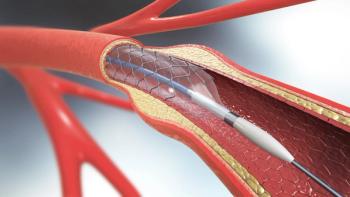
Study Data Show That Time-Restricted Eating May Be Effective for Weight Loss in Patients With Type 2 Diabetes
This “refreshing alternative” to calorie restriction does not include calorie counting, yet it is naturally associated with greater energy restriction compared to the latter.
A dietary strategy of time-restricted eating (TRE) without calorie counting led to significant weight loss compared to calorie restriction (CR) in patients with type 2 diabetes (T2D), according to authors who recent published their findings in JAMA Network Open. However, both strategies led to a reduction in waist circumference compared with controls by the end of the intervention.
“TRE is an appealing approach to weight loss in that it can be adopted at no cost, allows patients to continue consuming familiar foods, and does not require complicated calorie counting,” wrote study authors in the article.
Experts predict that 1 in 3 US adults could have T2D by 2050 if the disease continues to grow at the current rate. TRE is a lifestyle strategy to treat T2D that involves limiting food intake between 6 and 10 hours and fasting for the other 14 to 18 hours.
University of Illinois Chicago investigators enrolled 75 patients aged 18 to 80 years with obesity and T2D into a 6-month, randomized clinical trial to compare the effects of TRE without calorie counting and CR against a control group on weight reduction and glycemic control. The TRE arm was tasked with eating during the window of 12:00 pm and 8:00 pm (8 hours). The CR arm was assigned to consume 25% less calories daily.
The primary outcome was change in body weight at 6 months, and participants adhering to TRE lost significantly more weight (−3.56% [95% CI, −5.92% to −1.20%]; P = .004) compared to participants adhering to CR (−1.78% [95% CI, −3.67% to 0.11%]; P = .06) relative to the controlarm.
Even though the TRE intervention does not involve calorie counting, patients still achieved greater energy restriction than patients in the CR arm. Further, the TRE arm reported an easier time adhering to this dieting strategy compared to the CR arm, which is generally one of the main concerns with CR.
“Many patients find it difficult to adhere to CR because calorie intake must be vigilantly monitored every day,” study authors wrote in the article.
Investigators also evaluated secondary outcomes of change in hemoglobin A1c (HbA1c) level and metabolic risk factors. The TRE and CR arms both decreased HbA1c relative to the control arm (−0.91% [95% CI, −1.61% to −0.20%] and 0.94% [95% CI, −1.59% to −0.30%], respectively). Participants in both interventions experienced reduced weight circumference (visceral fat mass; different than weight loss), which is associated with HbA1c (glycemic control) so it could explain the similar outcome, according to the study authors.
The metabolic risk factors evaluated during the study included time in euglycemic range, medication effect score, blood pressure, and plasma lipid. However, the results showed that TRE was not significantly more effective on these outcomes compared to CR.
Findings from a sub analysis of the TRE dietary strategy among racial and ethnic groups also show that TRE is effective for glycemic control and weight reduction among all subgroups, including Hispanic and non-Hispanic Black adults, the 2 racial and ethnic groups with the highest prevalence of T2D in the United States. Further, this dietary intervention was not linked to serious adverse events, and it appears to be safe when used alongside medications.
The main limitations of the study include the short duration of the trial, the exclusion of participant blinding, self-reported dietary intake, choosing TRE (which by its nature may be linked to higher rates of self-monitoring and lower caloric intake), and the higher use of blood sugar management medications by patients in the TRE arm at baseline.
“TRE may have served as a refreshing alternative to CR,” authors conclude. “Our trial may help to improve the health of groups with a high prevalence of T2D.”
Reference
Pavlou V, Cienfuegos S, Lin S, et al. Effect of Time-Restricted Eating on Weight Loss in Adults With Type 2 Diabetes. JAMA Netw Open. 2023;6(10):e2339337. doi:10.1001/jamanetworkopen.2023.39337
Newsletter
Stay informed on drug updates, treatment guidelines, and pharmacy practice trends—subscribe to Pharmacy Times for weekly clinical insights.






































































































































































































